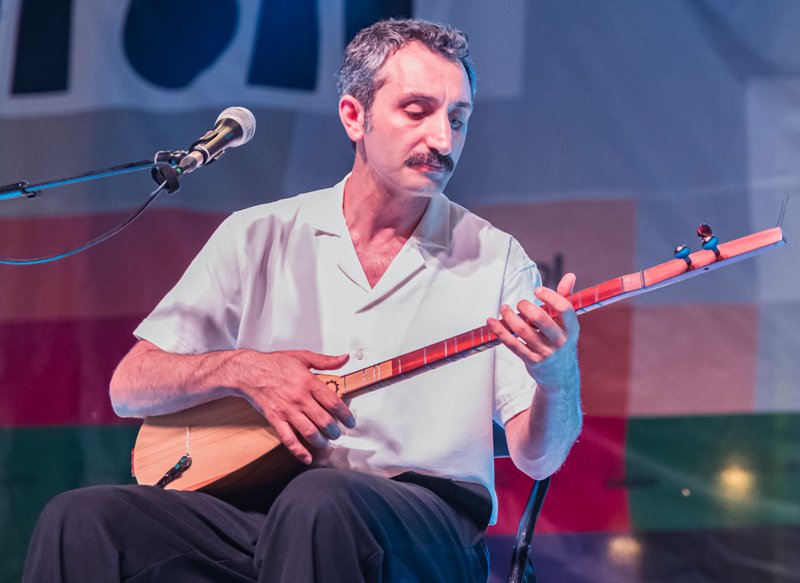(headline image: Ali Doğan Gönültaş playing tembur at Polirítmia 2023 – Photo by Susana Godoy)
The tembur, also known as tembûr and tanbur, is a fascinating musical instrument with a rich history and a unique sound. Originating from the Middle East, particularly in areas such as Iran, Turkey, and Central Asia, the tembur has served as a staple instrument in traditional music for centuries.
This instrument has a long and storied history dating back to ancient times. Its origins can be traced to the Persian Empire, where it was initially known as the tanbur. Over the centuries, the instrument spread to neighboring regions, evolving and adapting to the musical traditions of each culture it encountered. Today, variations of the tembur can be found in countries such as Iran, Turkey, Afghanistan, and Tajikistan, each with its own unique playing style and tuning system.
Notably, the tembur is a long-necked lute, characterized by its pear-shaped body and a fretless neck. Traditionally, the instrument’s body is crafted from a single piece of mulberry wood, contributing to its resonant and warm tonal quality. The soundboard is typically made of thin wood, often adorned with intricate rosette designs. The strings, usually made of silk or nylon, are plucked with a plectrum, producing a distinctive sound that is both melodic and evocative.
Mastering the art of playing the tembur requires a deep understanding of its unique playing techniques. Players use a combination of finger picking and strumming to produce a wide range of tones, from delicate and introspective to bold and dynamic. The instrument’s fretless neck allows for subtle pitch variations, enabling expressive microtonal inflections that are characteristic of Middle Eastern music.
The tembur holds a special place in the cultural fabric of the regions where it is prevalent. It is typically associated with Sufi, Alevi and Kurdish music and is used in spiritual and ceremonial contexts. Its soul-stirring melodies have the power to evoke a wide range of emotions, making it a cherished instrument in both classical and folk music traditions. Additionally, the tembur has gained international recognition, captivating audiences with its hauntingly beautiful sound and captivating performances.
Here are some notable tembur players: Şivan Perwer; Seyed Khalil Alinejad (1958 – 2001); Necdet Yaşar (1930 – 2017); Murat Aydemir; Özer Özel; Seyed Ali Jaberi; Faraz Kavyani; Aynur; Cemil Qoçgiri; Yalda Abassi; and Ali Doğan Gönültaş.


